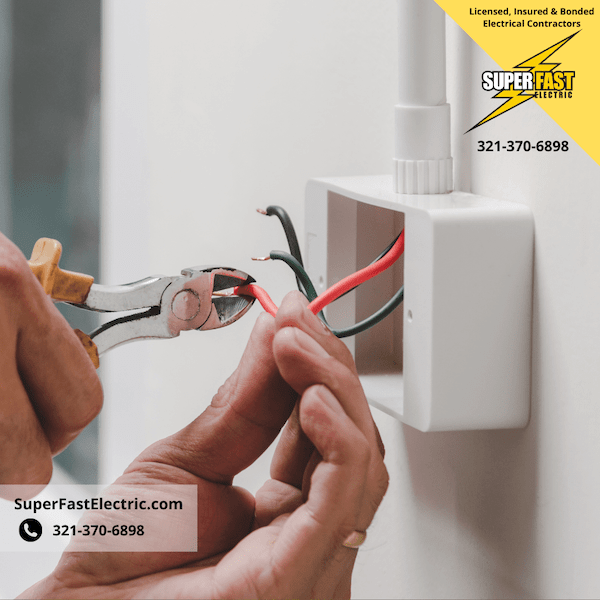Electrical Outlet Not Working? Here’s How to Troubleshoot

Electrical Contractor in Orlando, FL to assist with outlets that aren’t working, GCFI, and offering free safety & performance assessments.
In an instant, your electrical outlets can suddenly stop working, leaving your home’s appliances without power. At any time, an electrical outlet can malfunction, whether it’s from old age, electricity overload, or improper wiring. When they stop working, it can be extremely frustrating, leaving you searching for the cause.
An electrical outlet that isn’t working can be an easy fix or a sign of something more serious to come. So, in this article, we will be covering a simple troubleshooting process that you can follow. By the end, you should have your outlets working again or given the insight to call a professional electrical contractor in the Orlando, FL area.
Step 1. Test the Appliance
Before you get into solving the mystery of why your electrical outlet is not working, first check the appliance plugged into it. As time goes on, the wiring on any appliance can loosen and get weaker until it eventually stops working. To check to make sure the appliance is working, plug it into an outlet you know is working. If everything still works, you can move onto the next step.
Step 2. Check the Circuit Breakers
As a safety precaution, the circuit linked to the outlet could have tripped if it sensed an overload or other dangerous amounts of electricity. Storms in the area can be the cause of a tripped breaker as well. If you notice multiple electrical outlets not working simultaneously, this is a clue it might be the circuit breaker tripping. Take a trip to your electrical panel to check if any of the breakers are tripped.
Before turning the circuit breaker back on, be sure that you are not overloading any of the outlets in your home. If you turn the circuit breaker on while it is still overloaded, the circuit breaker will instantly trip again. If everything looks safe, turn the breaker back on. If this was the problem, your electrical outlets should work.
Step 3. Check GFCI’s
Like a circuit breaker—a GFCI will trip when it senses a foreign substance inferring with electricity flow. You will typically find GFCI’s in your bathroom, kitchen, laundry room, and other places impacted by water. When a GFCI trips, the button in the center of the outlet will pop out and shut off the electricity.
To reset the GFCI, push the button back until it clicks back in its original position. However, if the GFCI constantly trips, this could be a sign of more serious issues. Faulty structural wiring, and other more serious problems, will cause a GFCI to trip often, which requires a professional’s help to fix.
Step 4. Inspect the Outlet and Wiring
After checking all of the power sources, if the electrical outlet is still not working, it could be the outlet itself or the wiring. To safely test this, you will need to pick up a voltage tester from a local hardware store. Use a voltage tester to see if any power is being picked up from the outlet’s slots.
If you are still not detecting power, take out the outlet from the wall to get a closer look at the wiring. If you can detect voltage coming from the wires, you will need to replace the outlet because it’s defective. If you don’t detect power in the wiring and have done the previous steps, you need an expert’s help.
Contact Us Today to Schedule an Electrical Inspection.
